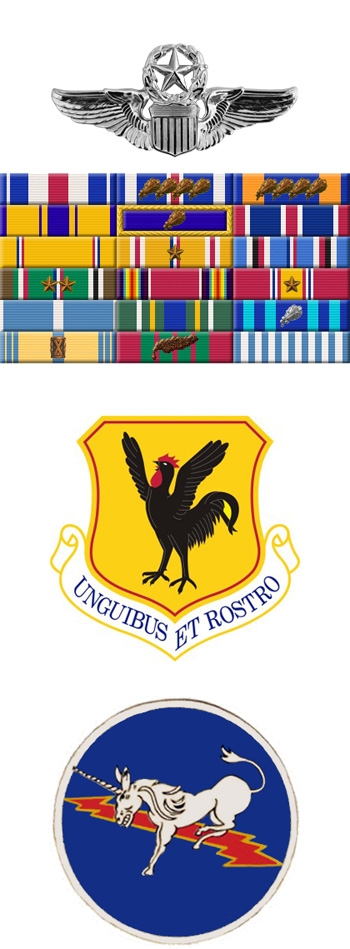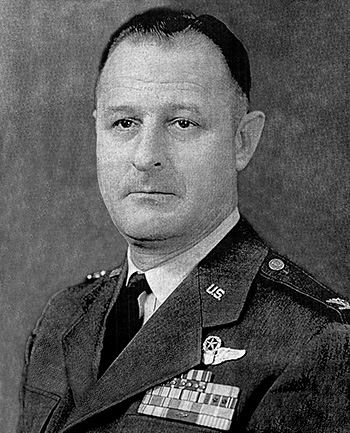
|
John B. Murphy |
 |
|||
| Rank, Service | ||||
Colonel O-6, U.S. Air Force |
||||
| Veteran of: | ||||
|
||||
| Tribute: | ||||
John Murphy was born on December 20, 1917, in Charleston, South Carolina. He was commissioned a 2d Lt of Infantry through the Army ROTC program on July 18, 1939, and entered the Aviation Cadet Program of the U.S. Army Air Corps on November 11, 1939, receiving his pilot wings at Kelly Field, Texas, on July 26, 1940. His first assignment was as a P-40 Warhawk pilot with the 55th Pursuit Squadron of the 20th Pursuit Group at Moffett Field, California, from July to October 1940, and then as a P-40 pilot with the 18th Pursuit Squadron of the 35th Pursuit Group at Hamilton Field, California, from October 1940 to February 1941. Lt Murphy transferred with the 18th PS to Elmendorf Field, Alaska, when the squadron joined the 28th Composite Group there in February 1941. He joined the 11th Fighter Squadron of the 343rd Fighter Group at Elmendorf Field in January 1942, and he was credited with 1 shared enemy aircraft destroyed in aerial combat before returning to the United States in February 1943. His next assignment was as a P-47 Thunderbolt and then P-51 Mustang pilot with the 370th Fighter Squadron of the 359th Fighter Group at Westover Field, Massachusetts, from February to October 1943, and then in England from October 1943 until he returned to the United States in September 1944. During this time, LtCol Murphy was credited with the destruction of 6.25 enemy aircraft in aerial combat, plus 1 probable and 2 damaged, for a total of 6.75 destroyed in the air during the war. He served as a fighter pilot and deputy base commander in the U.S. until leaving active duty and going into the Air Force Reserve on February 12, 1946. LtCol Murphy was recalled to active duty on January 29, 1951, and then served as a Comptroller with Headquarters U.S. Air Force in the Pentagon from January 1951 to February 1954. His next assignment was as Executive Officer of the 8th Fighter-Bomber Wing at Saewon AB, South Korea, from March to September 1954, followed by service as Commander of the 18th Fighter-Bomber Wing at Taegu AB, South Korea, from September to October 1954, and at Kadena AB, Okinawa, from November 1954 to February 1955. Col Murphy served as Director of Combat Operations and then as Assistant Deputy Chief of Staff for Operations with Headquarters 34th Air Division at Kirtland AFB, New Mexico, from March 1955 to December 1956, and then as Assistant Director of Operations Plans with Headquarters Air Defense Command at Ent AFB, Colorado, from January to June 1957. His next assignment was as Chief of the Aircraft Division with Headquarters Air Defense Command from July 1957 to October 1959, followed by service as Chief of the Operations Plans Division with Headquarters North American Air Defense Command at Ent AFB from October 1959 to January 1961. His final assignment was as Base Commander, and Commander of the 507th Air Base Group, at Kincheloe AFB, Michigan, from February 1961 until his retirement from the Air Force on November 1, 1964. John Murphy died on August 17, 1984, and was buried at the Santa Fe National Cemetery in Santa Fe, New Mexico. |
||||
|
||||

